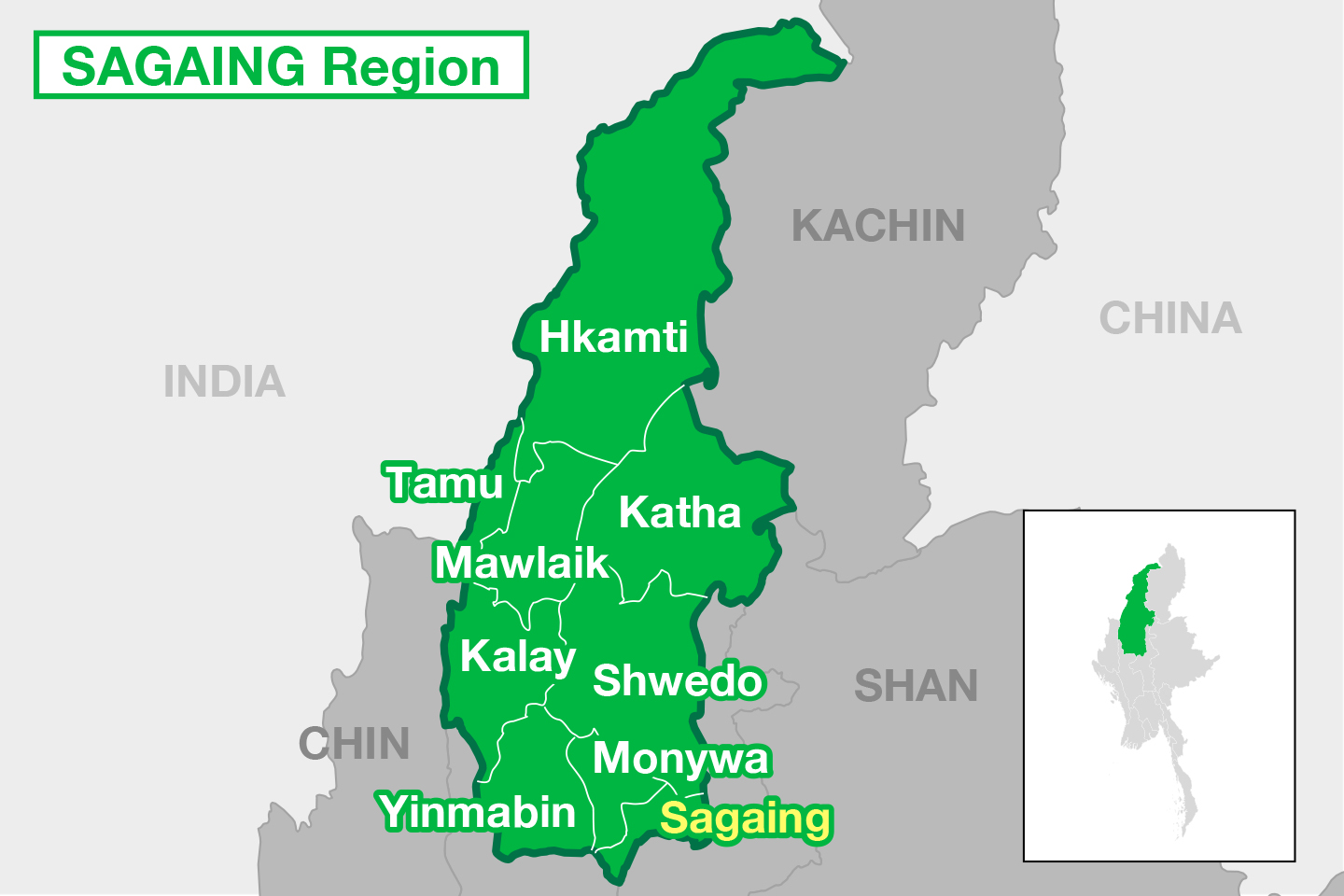 Sagaing Region is one of the divisions of Myanmar and it is located at the North Western part of the country. This region is bordered by India’s Nagaland, Manipur State and Arunachal Pradesh State to the North, Kachin State, Shan State and Mandalay Region to the East, Mandalay Region and Magway Region to the South and Chin State and India to the West. The capital city of Sagaing Region is Sagaing. This region has an area of 93,527 km² and which is the second largest area of Myanmar. Sagaing Region consists of 8 districts: Sagaing, Shwe Bo, Monywa, Katha, Kale, Tamu, Mawlaik and Hkamti. The major cities of this region are Sagaing, Mingun, Monywa, Shwe Bo and Kale. The main ethnic group is Bamar and other minor ethnic groups like Shan (live in the upper Chindwin River valley), Naga (live in the North of Northwest mountain ranges), Zomi (live in the South), Kadu and Ganang (live in the upper Mu River valley and Meza River valley. Among those natives, the Naga New Year Festival which is most famous festival from all over the world and many tourists come to visit this rare tribe's culture in Myanmar. This festival usually held in January.
Sagaing Region is one of the divisions of Myanmar and it is located at the North Western part of the country. This region is bordered by India’s Nagaland, Manipur State and Arunachal Pradesh State to the North, Kachin State, Shan State and Mandalay Region to the East, Mandalay Region and Magway Region to the South and Chin State and India to the West. The capital city of Sagaing Region is Sagaing. This region has an area of 93,527 km² and which is the second largest area of Myanmar. Sagaing Region consists of 8 districts: Sagaing, Shwe Bo, Monywa, Katha, Kale, Tamu, Mawlaik and Hkamti. The major cities of this region are Sagaing, Mingun, Monywa, Shwe Bo and Kale. The main ethnic group is Bamar and other minor ethnic groups like Shan (live in the upper Chindwin River valley), Naga (live in the North of Northwest mountain ranges), Zomi (live in the South), Kadu and Ganang (live in the upper Mu River valley and Meza River valley. Among those natives, the Naga New Year Festival which is most famous festival from all over the world and many tourists come to visit this rare tribe's culture in Myanmar. This festival usually held in January.
Mingun
Mingun Pahtodawgyi & Mingun Bell
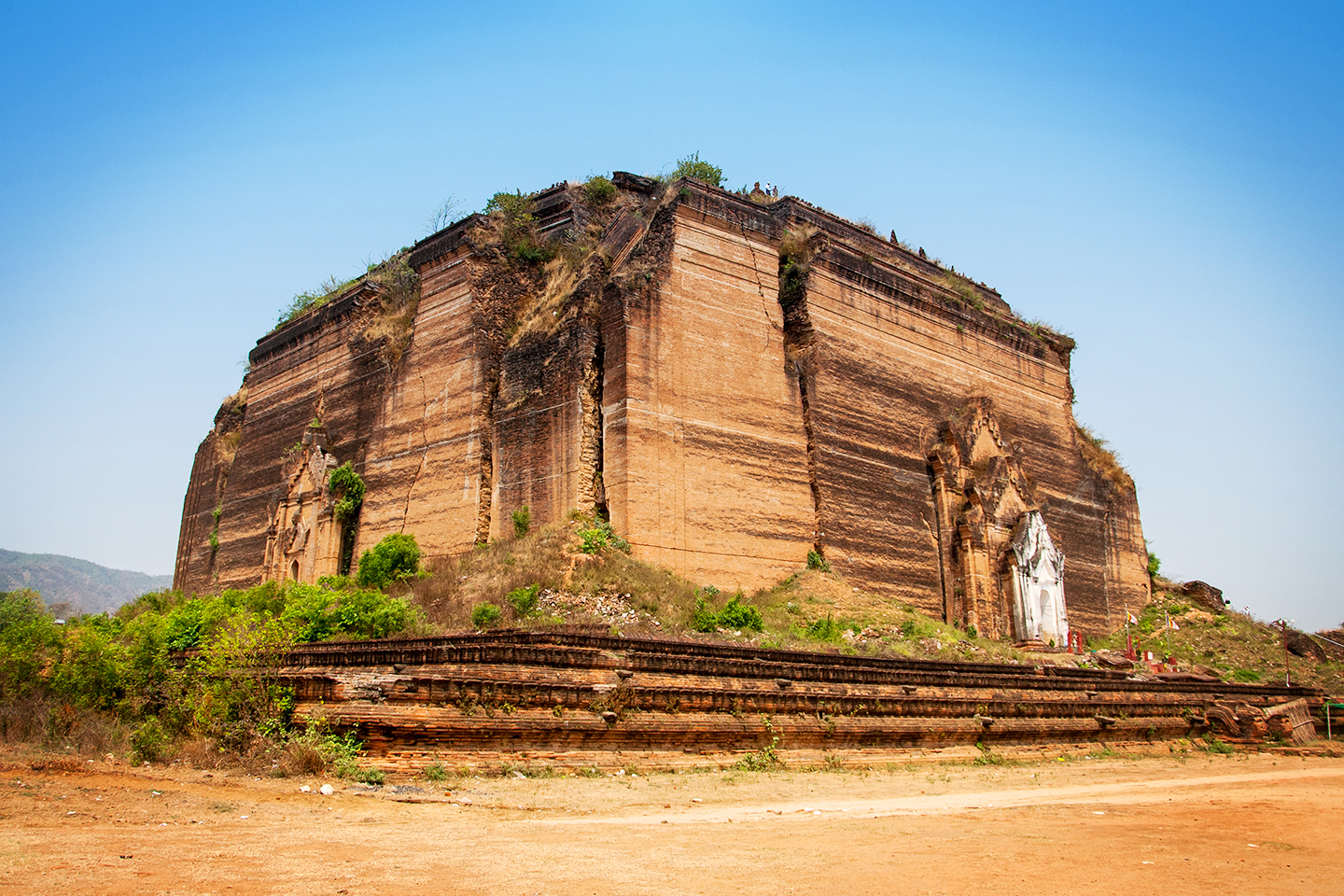 Mingun Pahtodawgyi is located in Mingun and which is one of the famous place in Sagaing Region. This was built in 1790s by King Bodawpaya but it was intentionally left unfinished due to prophesy that the country would break down and the King will die once the pagoda was completed. The pagoda was discontinued the construction at the height of 50 m (164.042 feet) which is only one third of the intended height. If you are interested to study Myanmar arts and crafts of Kong Baung period in Mingun Pahtodawgyi, there is a Pon Daw Pagoda which is prototype of Mingun Pahtodawgyi. It is located along the riverbank which is about 320 meters southeast of the Mingun Pahtodawgyi. In 1839 March, there was an earthquake which caused the unfinished pagoda badly damaged with huge cracks. I recommend you to go to the east stairway of Mingun Pahtodawgyi where you can enjoy naturally picturesque view of Ayeyawady River and pleasantly green Mingun hill.
Mingun Pahtodawgyi is located in Mingun and which is one of the famous place in Sagaing Region. This was built in 1790s by King Bodawpaya but it was intentionally left unfinished due to prophesy that the country would break down and the King will die once the pagoda was completed. The pagoda was discontinued the construction at the height of 50 m (164.042 feet) which is only one third of the intended height. If you are interested to study Myanmar arts and crafts of Kong Baung period in Mingun Pahtodawgyi, there is a Pon Daw Pagoda which is prototype of Mingun Pahtodawgyi. It is located along the riverbank which is about 320 meters southeast of the Mingun Pahtodawgyi. In 1839 March, there was an earthquake which caused the unfinished pagoda badly damaged with huge cracks. I recommend you to go to the east stairway of Mingun Pahtodawgyi where you can enjoy naturally picturesque view of Ayeyawady River and pleasantly green Mingun hill.
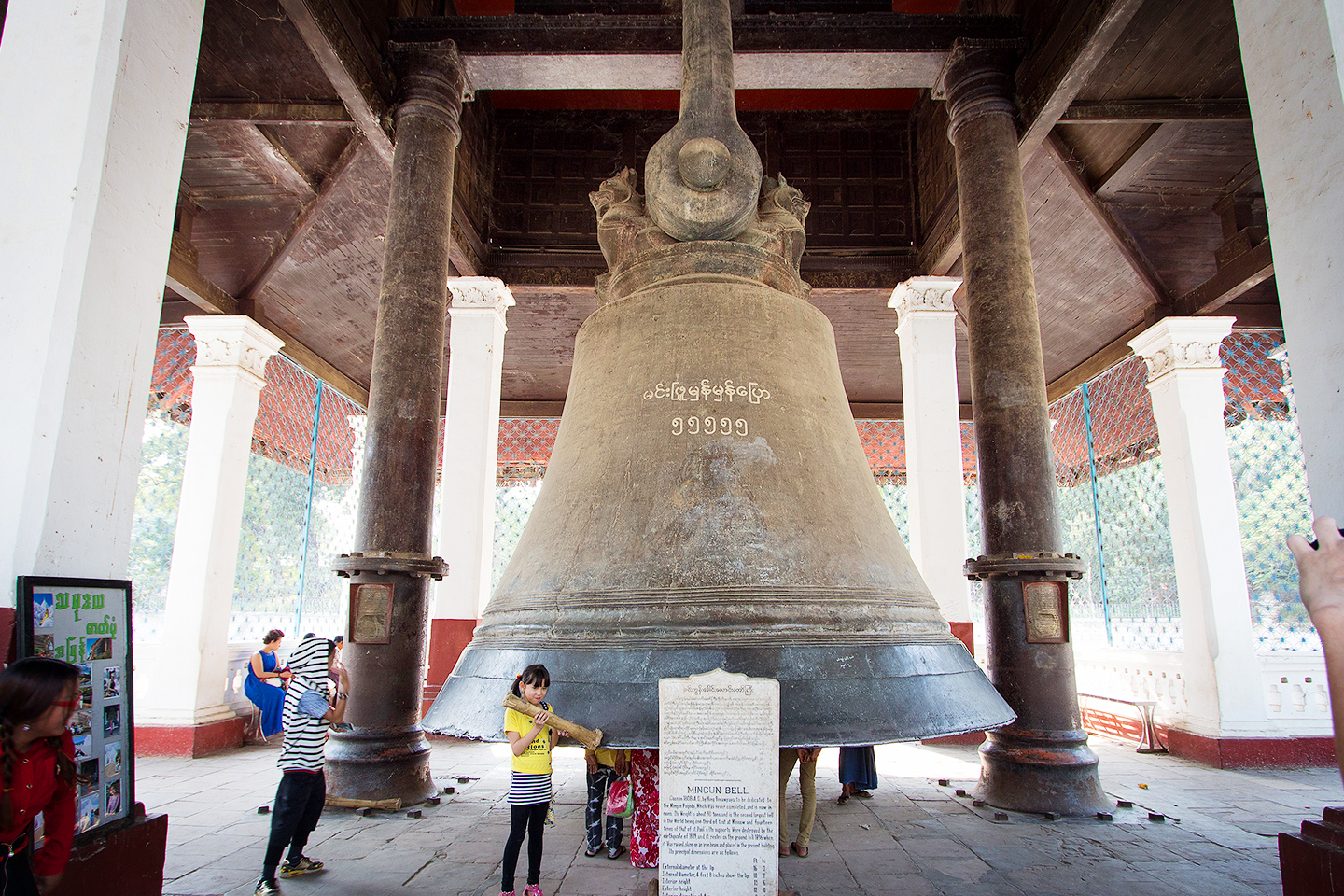 Chokchai Suksatavonraphan / Shutterstock.com
Chokchai Suksatavonraphan / Shutterstock.com
Mingun Bell was casted to go with the Mingun Pahtodawgyi by King Bodawpaya. The weight of the bell in Burmese measurement is 55,555 Viss (known as Peik-Tha in Burmese) or 90717.426 kg (1 Viss=1.63293 kg). Most of the local people memorized as a mnemonic "Min Hpyu Hman Hman Pyaw" with the consonants representing the number 5 in Burmese astronomy and numerology. It was the largest ringing bell in the world until 2000.
Mya Thein Tan Pagoda
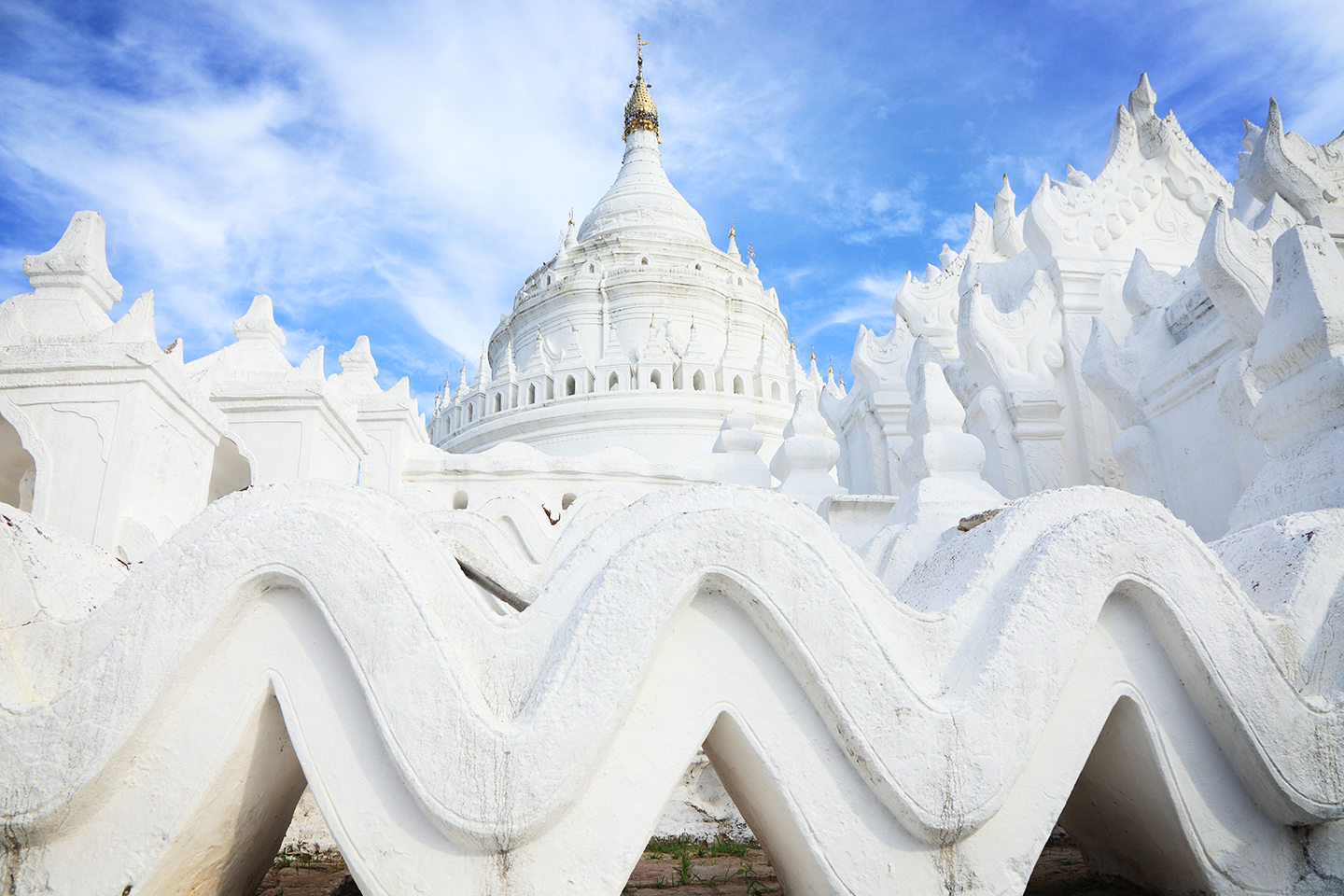 Mya Thein Tan Pagoda was built in 1816 by King Ba Gyi Daw as a commemorative of his favorite wife the Hsin Byu Me Princess. This pagoda is also known as Hsin Byu Me Pagoda and it is located at the nothern part of Mingun, Sagaing Division. The seven terraces like the waves surrounding the Pagoda signify the seven rivers and the seven concentric terraces represent the seven mountains ranges going up to the mythical Mt. Meru according to Buddhist mythology. The pagoda was the image of the Sulamani Pagoda and the surrounding Pyathats (Steeple) signify the abode of the Nats (Spirits). The three Tazaungs (Fane) signified the three from the Nats’ world to Thingathanago prepared for Buddha to descend from Trāyastriṃśa heaven and each of those have 53 steps. https://mingalago.com/interest/shwebo/
Mya Thein Tan Pagoda was built in 1816 by King Ba Gyi Daw as a commemorative of his favorite wife the Hsin Byu Me Princess. This pagoda is also known as Hsin Byu Me Pagoda and it is located at the nothern part of Mingun, Sagaing Division. The seven terraces like the waves surrounding the Pagoda signify the seven rivers and the seven concentric terraces represent the seven mountains ranges going up to the mythical Mt. Meru according to Buddhist mythology. The pagoda was the image of the Sulamani Pagoda and the surrounding Pyathats (Steeple) signify the abode of the Nats (Spirits). The three Tazaungs (Fane) signified the three from the Nats’ world to Thingathanago prepared for Buddha to descend from Trāyastriṃśa heaven and each of those have 53 steps. https://mingalago.com/interest/shwebo/
Sagaing
Sagaing Hill
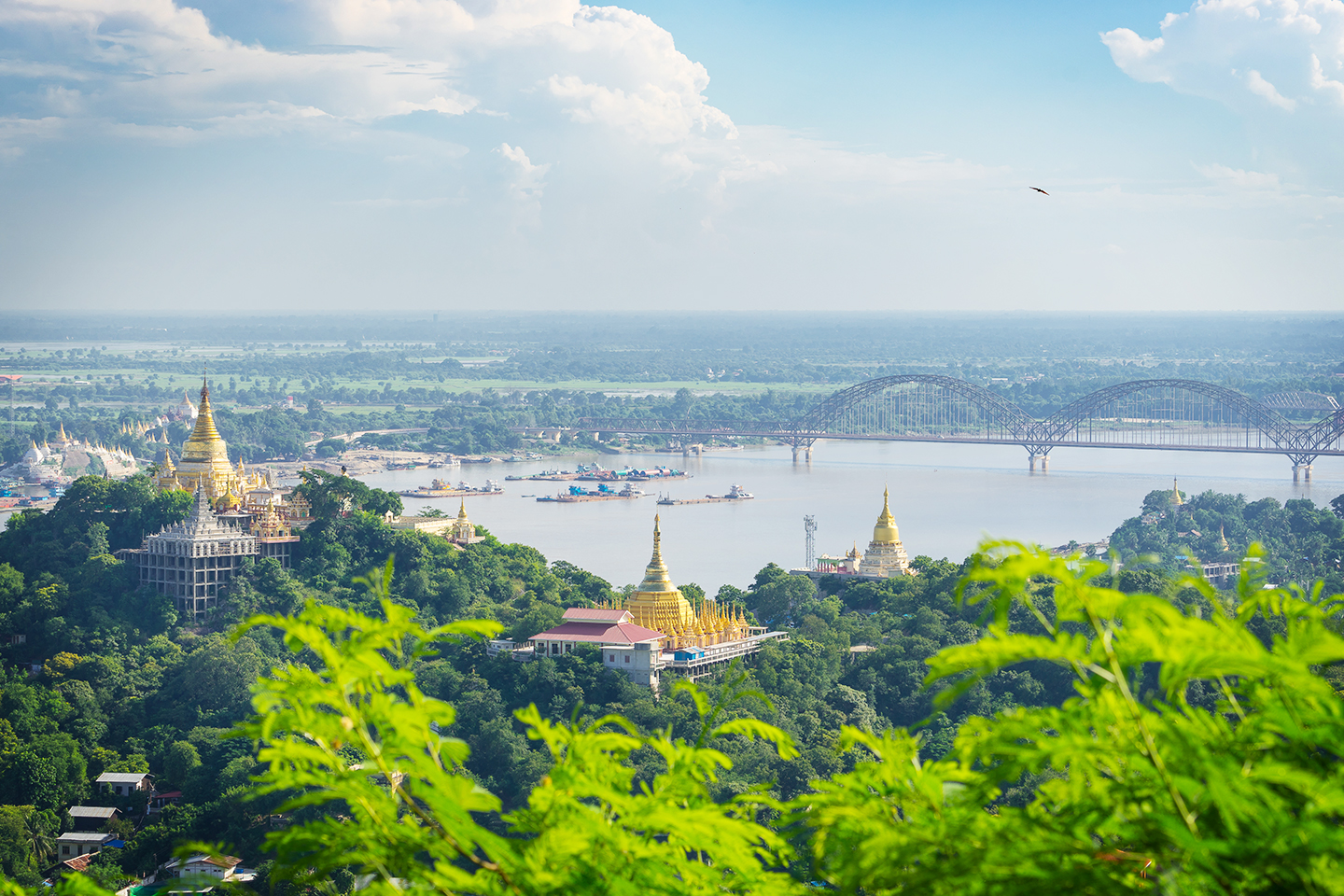 Sagaing Hill is famous for its hundreds of white, silver & gold pagodas and monasteries that located on its hilly landscape adjacent to the Irrawaddy River. It is also known as the Centre of Buddhism in Myanmar because it has more than 300 religious buildings in this area and it is one of the good places to do the meditation. The culture of Myanmar Buddhism is so vibrant here and it is a very wonderful and peaceful place.
Sagaing Hill is famous for its hundreds of white, silver & gold pagodas and monasteries that located on its hilly landscape adjacent to the Irrawaddy River. It is also known as the Centre of Buddhism in Myanmar because it has more than 300 religious buildings in this area and it is one of the good places to do the meditation. The culture of Myanmar Buddhism is so vibrant here and it is a very wonderful and peaceful place.
Soon Oo Pon Nya Shin Pagoda
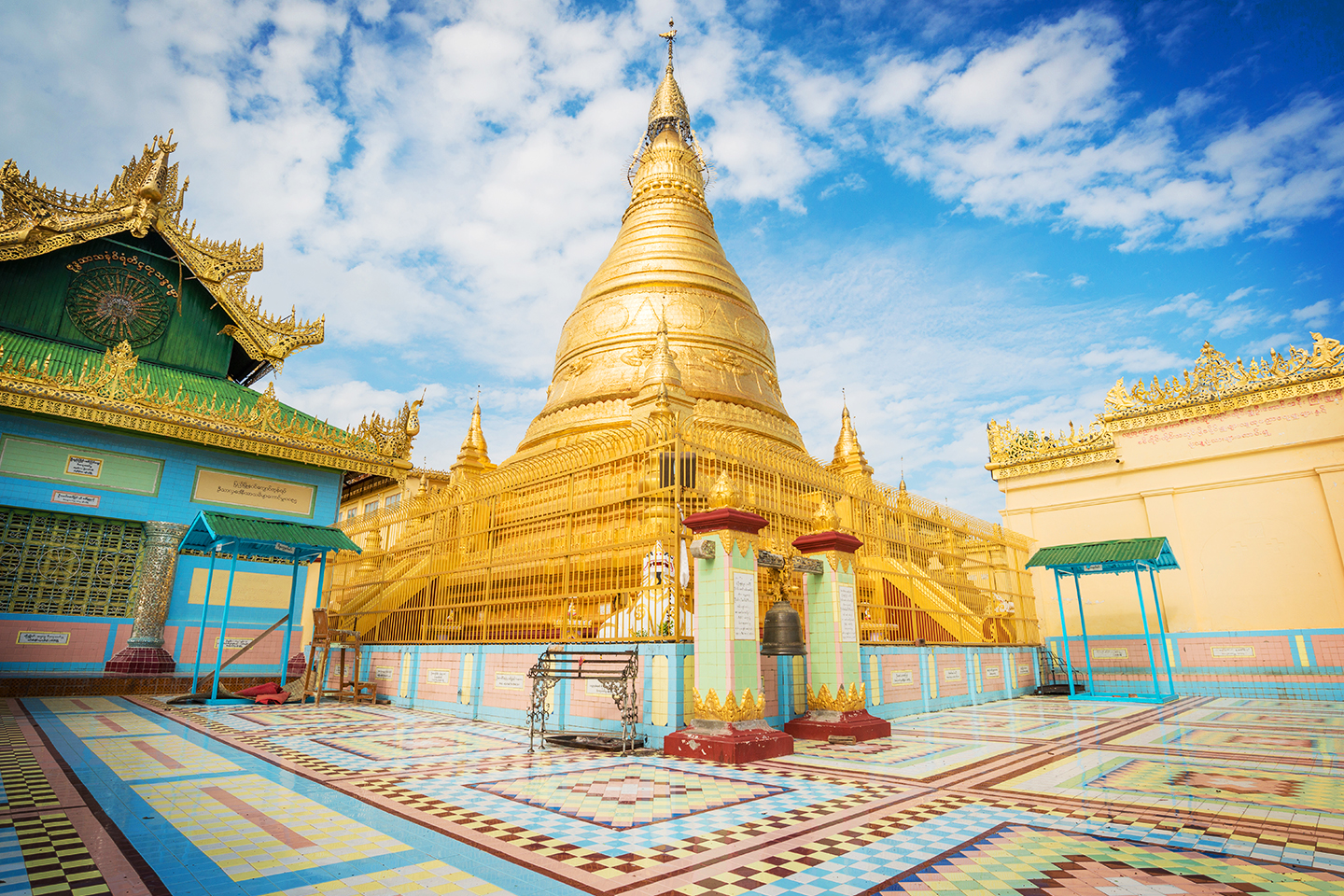 Soon Oo Pon Nya Shin Pagoda lies on top of Nga Pha Hill which is one of the 37 hilltops of Sagaing Hills. This pagoda was enshrined the Buddha relics and built in 1312 by U Pon Nya. As of the legendary, the earliest Soon (breakfast used in honorific expression for Buddha, Monks or Nun) is always being offered before any by human beings no matter how early you go. The festival of the pagoda is regularly held on the full moon day of Warso (the 4th month of Myanmar Calendar) which usually falls in July every year.
Soon Oo Pon Nya Shin Pagoda lies on top of Nga Pha Hill which is one of the 37 hilltops of Sagaing Hills. This pagoda was enshrined the Buddha relics and built in 1312 by U Pon Nya. As of the legendary, the earliest Soon (breakfast used in honorific expression for Buddha, Monks or Nun) is always being offered before any by human beings no matter how early you go. The festival of the pagoda is regularly held on the full moon day of Warso (the 4th month of Myanmar Calendar) which usually falls in July every year.
U Min Thonse Pagoda
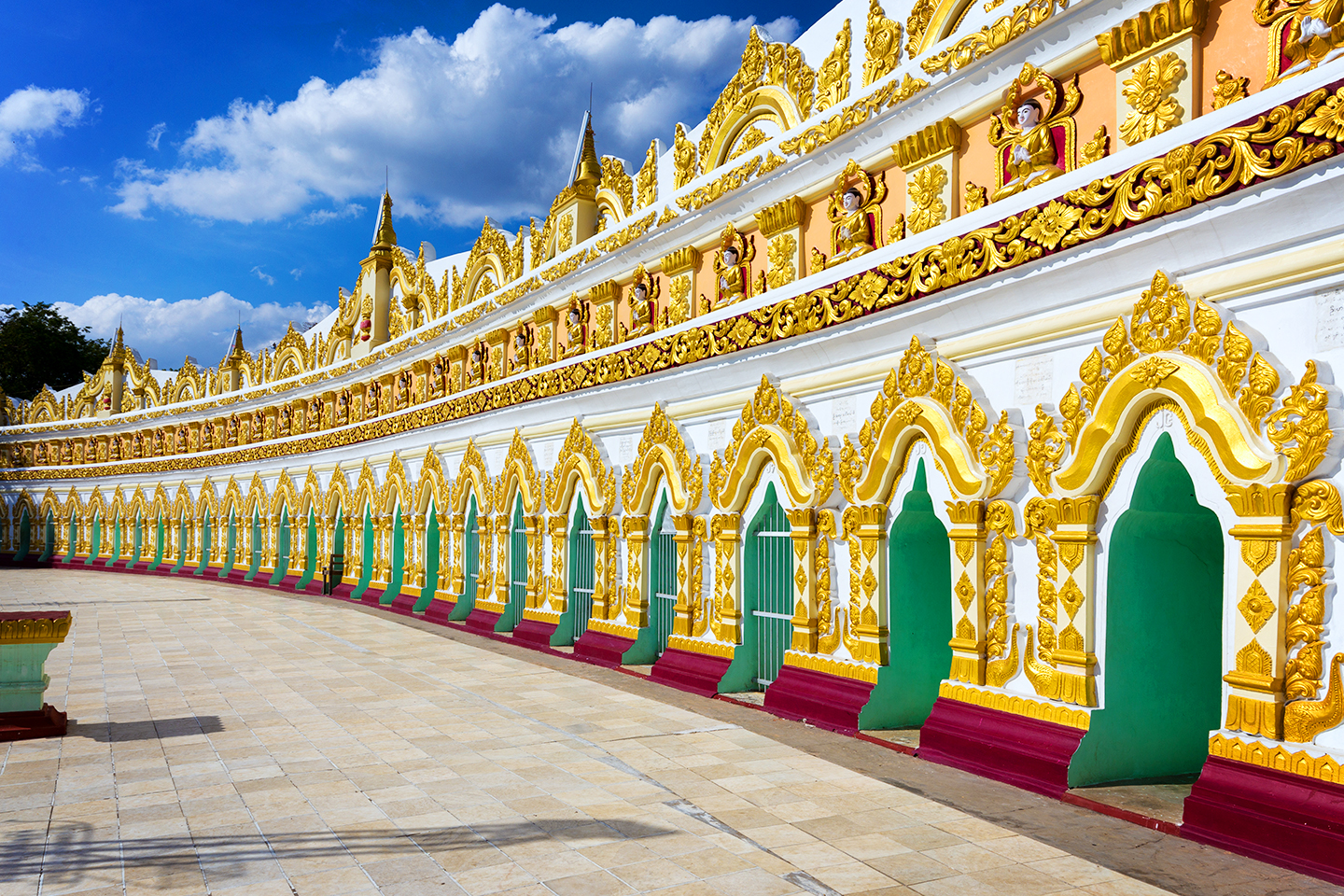
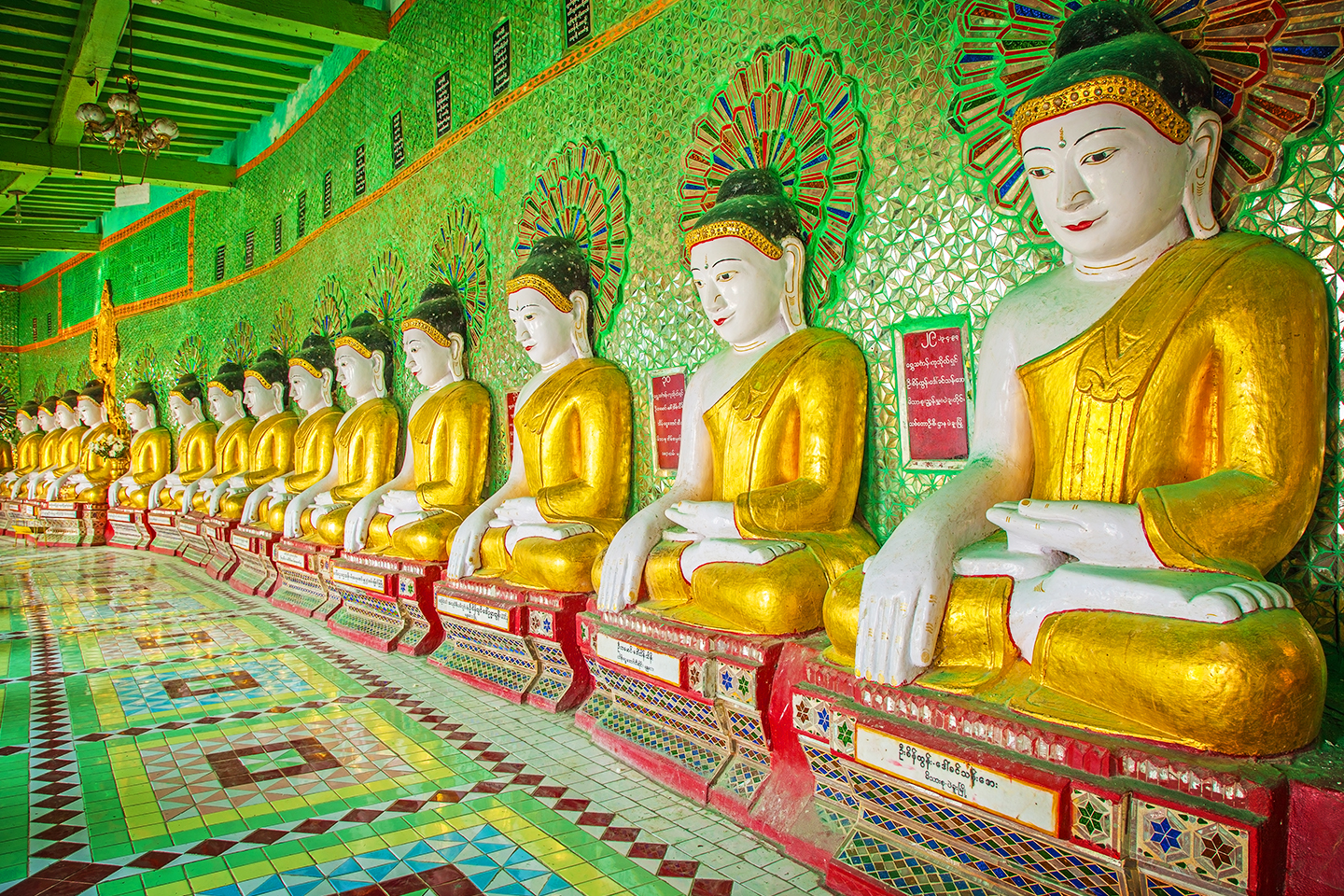 U Min Thonse Pagoda (U Min means “cave” and Thonse means “thirty”, that’s why it is also known as “thirty caves pagoda”) is situated on the Sagaing Hill which was built by a venerable monk, Padugyi Thangayaza. This pagoda was built to mark Buddha's ten paramis and 30 variants. Inside of the pagoda, there are 45 Buddha statues in commemoration of the Buddha spent 45 years to give sermons.
U Min Thonse Pagoda (U Min means “cave” and Thonse means “thirty”, that’s why it is also known as “thirty caves pagoda”) is situated on the Sagaing Hill which was built by a venerable monk, Padugyi Thangayaza. This pagoda was built to mark Buddha's ten paramis and 30 variants. Inside of the pagoda, there are 45 Buddha statues in commemoration of the Buddha spent 45 years to give sermons.
U Min Koese Pagoda
U Min Koese Pagoda (U Min means “cave” and Koese means “ninety”, that’s why it is also known as “ninety caves pagoda”) is situated on the Sagaing Hill which was built by King Mingaung of Innwa. The original name of the pagoda was Sinpho Hlai Pagoda. In 1293, the pagoda was named U Min Chaukse and in 1330 it was renamed to U Min Koese.
Tilawkaguru Cave Monastery
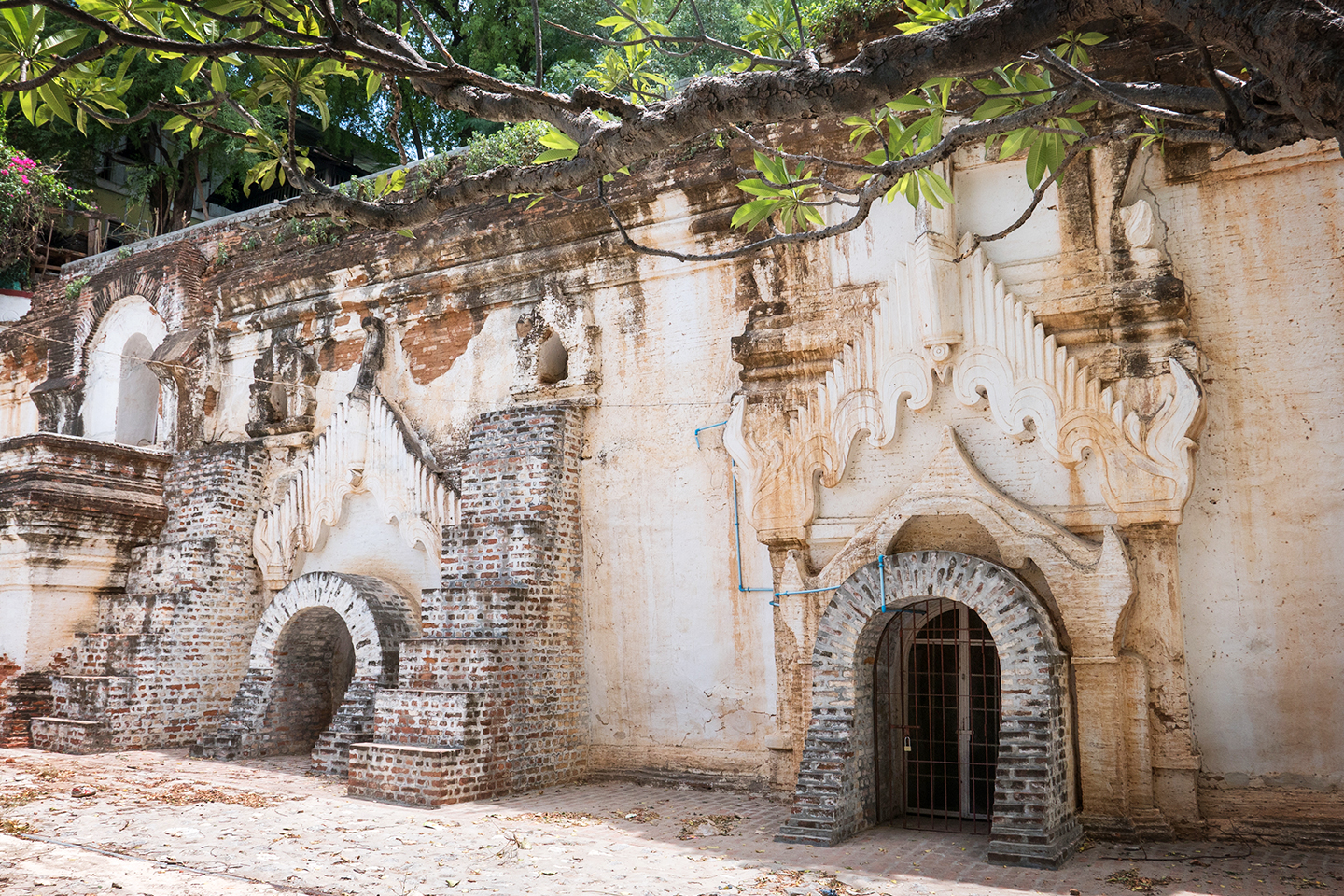 Tilawkaguru Cave Monastery is located at the foot of the temple studded hills of Saigang. It was built in 1670s and which was a meditation cave. You can see the most impressive preserved cave paintings inside with beautifully bright colors like reds, yellows blues and turquoise which made the paintings more vivid and lively. The paintings describe the life of the Buddha, animals, warriors, battles, merchants, courtesans, Kings, peasants and the mythological creatures. The door is usually closed and you might need to find the key holder with the help of locals to open for you.
Tilawkaguru Cave Monastery is located at the foot of the temple studded hills of Saigang. It was built in 1670s and which was a meditation cave. You can see the most impressive preserved cave paintings inside with beautifully bright colors like reds, yellows blues and turquoise which made the paintings more vivid and lively. The paintings describe the life of the Buddha, animals, warriors, battles, merchants, courtesans, Kings, peasants and the mythological creatures. The door is usually closed and you might need to find the key holder with the help of locals to open for you.
The Sitagu International Buddhist Academy
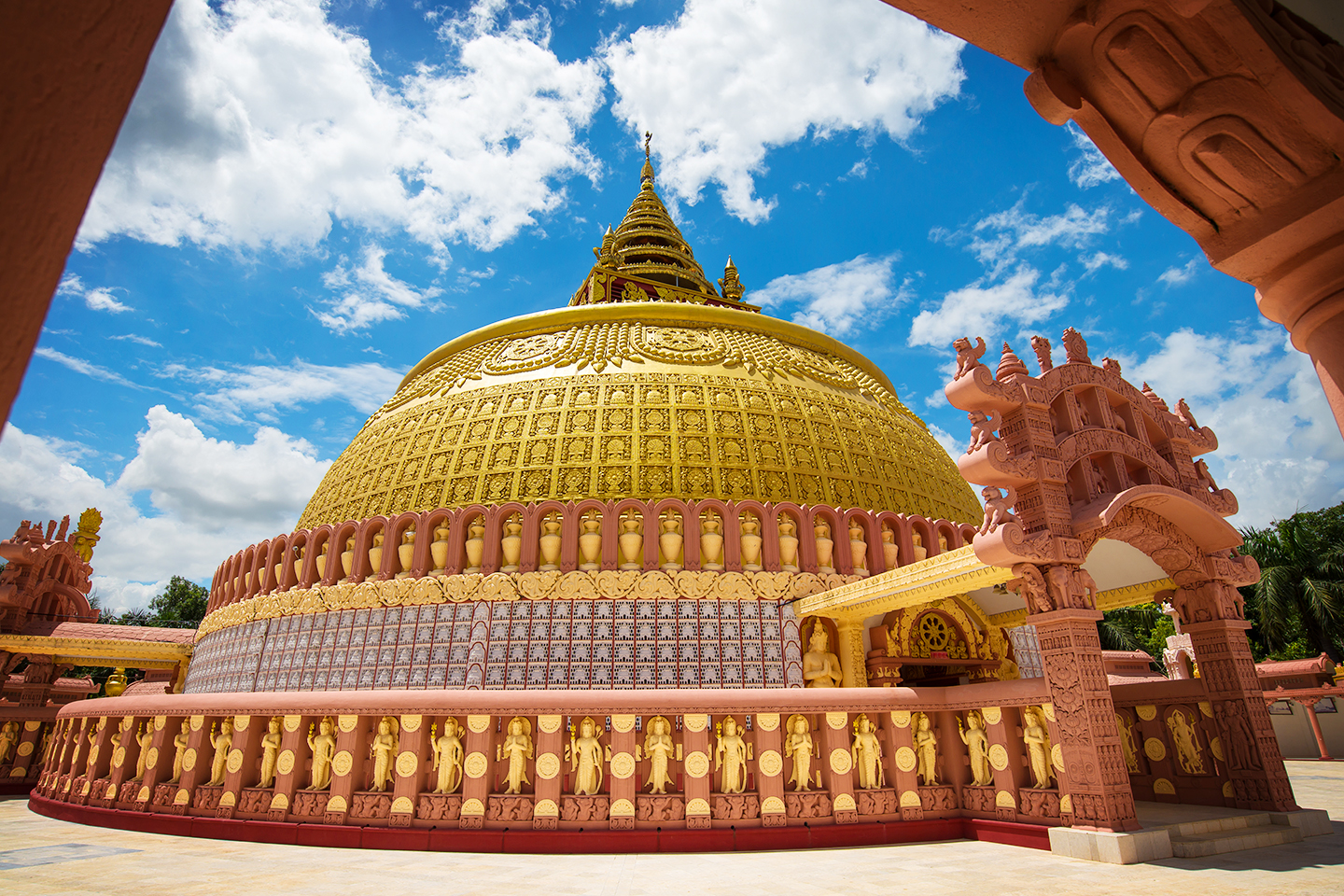 The Sitagu International Buddhist Academy was set up in 1994 by the venerable Thegon Sayadaw, Head of the Sitagu Association of Myanmar, to propagate the three fold Saddhamma of scriptural study (Pariyatti), Buddhist practice (Patipatti) and the realization of the Dhamma (Patipvedha) in this existing world. The Sitagu Association built the world-class educational institution intended to provide undergraduate and graduate level teaching in Buddhist Studies and the related academic subjects to qualified monks, nuns and laypersons. The Academy is located just near to the Soon Oo Pon Nya Shin Pagoda, in the western part of the Sagaing Hills and the Minwun. For more detail information please check here (http://www.myanmarnet.net/nibbana/stacdamy.htm).
The Sitagu International Buddhist Academy was set up in 1994 by the venerable Thegon Sayadaw, Head of the Sitagu Association of Myanmar, to propagate the three fold Saddhamma of scriptural study (Pariyatti), Buddhist practice (Patipatti) and the realization of the Dhamma (Patipvedha) in this existing world. The Sitagu Association built the world-class educational institution intended to provide undergraduate and graduate level teaching in Buddhist Studies and the related academic subjects to qualified monks, nuns and laypersons. The Academy is located just near to the Soon Oo Pon Nya Shin Pagoda, in the western part of the Sagaing Hills and the Minwun. For more detail information please check here (http://www.myanmarnet.net/nibbana/stacdamy.htm).
Kaung Hmu Daw Pagoda
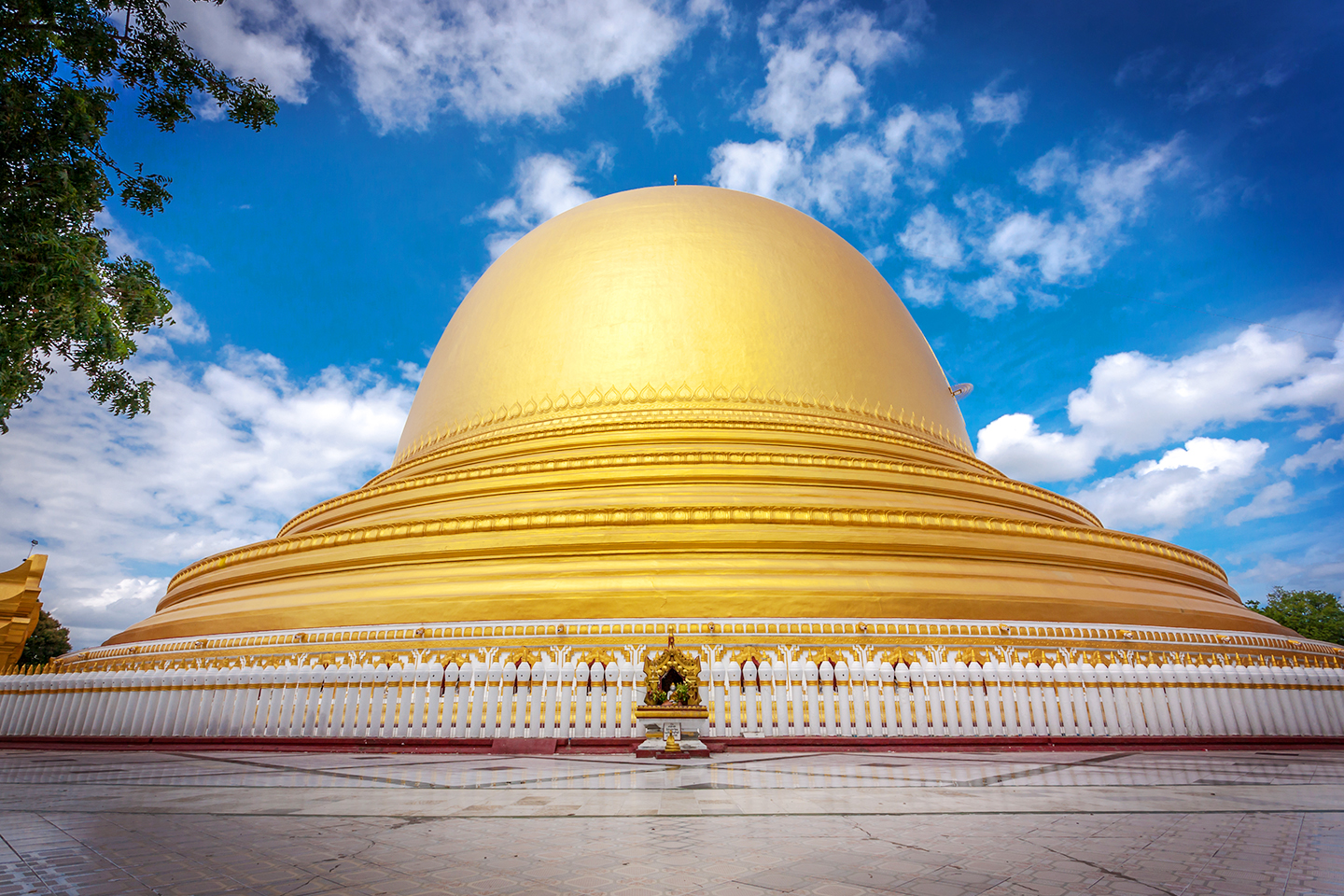 Kaung Hmu Daw Pagoda (also known asYaza Mani Sula Kaunghmudaw) is located at the Northwestern part of Sagaing. The pagoda was built by the King Tha Lun in 1636 and took 12 years to complete it. Kaung Hmu Daw is well known for its egg-shaped design which stands out from other traditional style (basically pyramid-shaped) pagodas. The pagoda is 46 m (150.92 feet) in height and has a girth of 274 m (898.95 feet). According to the legend, the pagoda enshrined the lower left tooth relic, 11 hair relics, an alms bowl, statues, pagodas and other relics.
Kaung Hmu Daw Pagoda (also known asYaza Mani Sula Kaunghmudaw) is located at the Northwestern part of Sagaing. The pagoda was built by the King Tha Lun in 1636 and took 12 years to complete it. Kaung Hmu Daw is well known for its egg-shaped design which stands out from other traditional style (basically pyramid-shaped) pagodas. The pagoda is 46 m (150.92 feet) in height and has a girth of 274 m (898.95 feet). According to the legend, the pagoda enshrined the lower left tooth relic, 11 hair relics, an alms bowl, statues, pagodas and other relics.
Monywa
Mohnyin Thanboddhay Pagoda
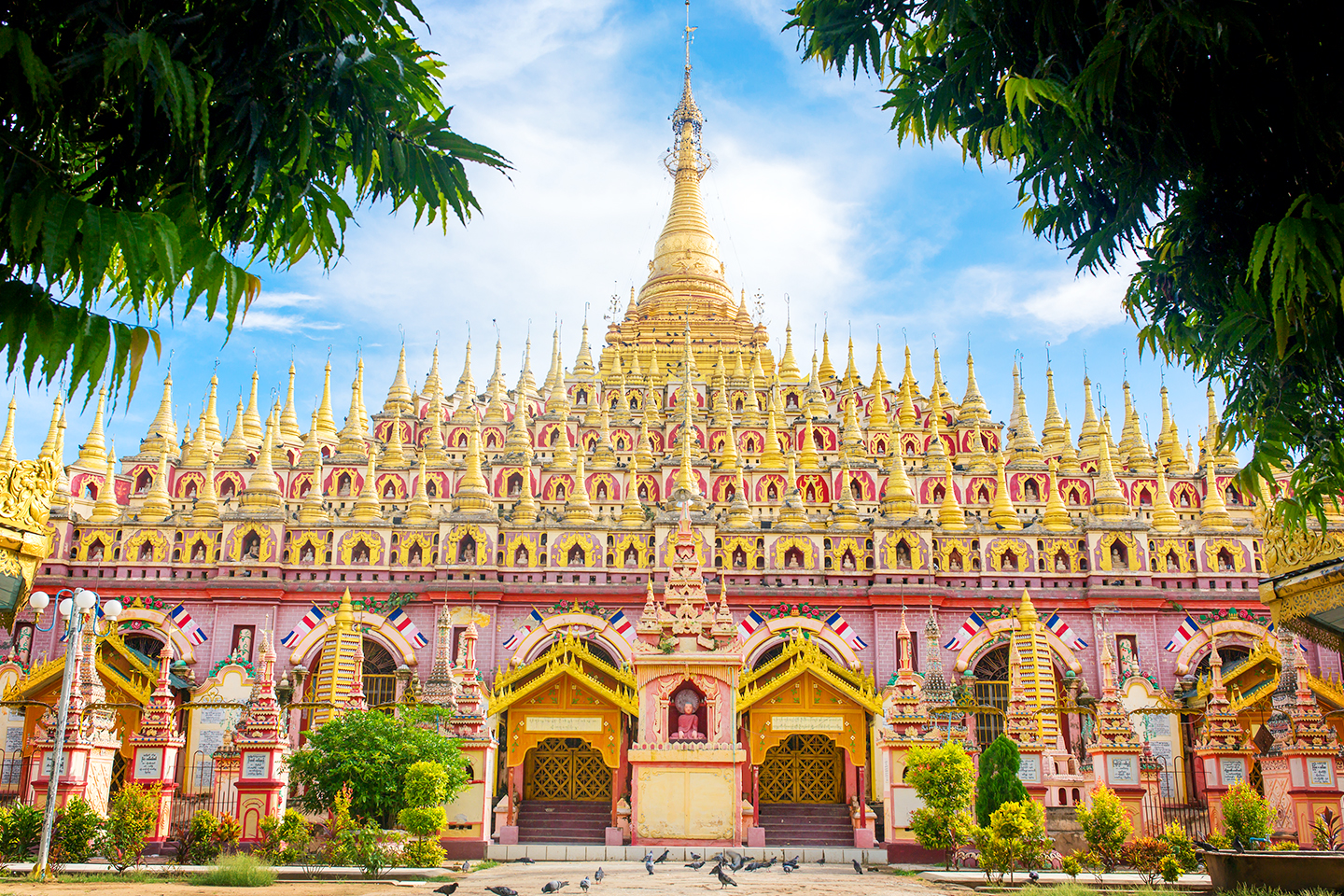 Mohnyin Thanboddhay Pagoda is located 15 km South East of Monywa and it was built in 1939 by venerable monk Mohnyin Sayadaw U Thumana. It took nearly 13 years to finish and completed in 1952. This pagoda is well known for its splendid architecture design which is very unique and stunning. You can see the statues of a pair of magnificent 2 white elephants guarded at the entrance gate. It is a kind of sacred and auspicious in Buddhist symbolism because the pagodas are usually guarded by the mythical lions (known as Chinthes in Burmese). The main stupa is 40 m in height and covered with many Buddha images, has over 582000 big and small Buddha images, in both interior and exterior walls. The festival of the pagoda is celebrated once a year on the full moon day of Tazaungmone (8th month of Myanmar calendar), usually in November, which usually lasts couple days and it is very crowded with the pilgrims from all over the country. The pagoda opens daily from 8 am to 6 pm and the admission fee is $ 3 per person.
Mohnyin Thanboddhay Pagoda is located 15 km South East of Monywa and it was built in 1939 by venerable monk Mohnyin Sayadaw U Thumana. It took nearly 13 years to finish and completed in 1952. This pagoda is well known for its splendid architecture design which is very unique and stunning. You can see the statues of a pair of magnificent 2 white elephants guarded at the entrance gate. It is a kind of sacred and auspicious in Buddhist symbolism because the pagodas are usually guarded by the mythical lions (known as Chinthes in Burmese). The main stupa is 40 m in height and covered with many Buddha images, has over 582000 big and small Buddha images, in both interior and exterior walls. The festival of the pagoda is celebrated once a year on the full moon day of Tazaungmone (8th month of Myanmar calendar), usually in November, which usually lasts couple days and it is very crowded with the pilgrims from all over the country. The pagoda opens daily from 8 am to 6 pm and the admission fee is $ 3 per person.
Laykyun Setkyar Standing Buddha & the Reclining Buddha
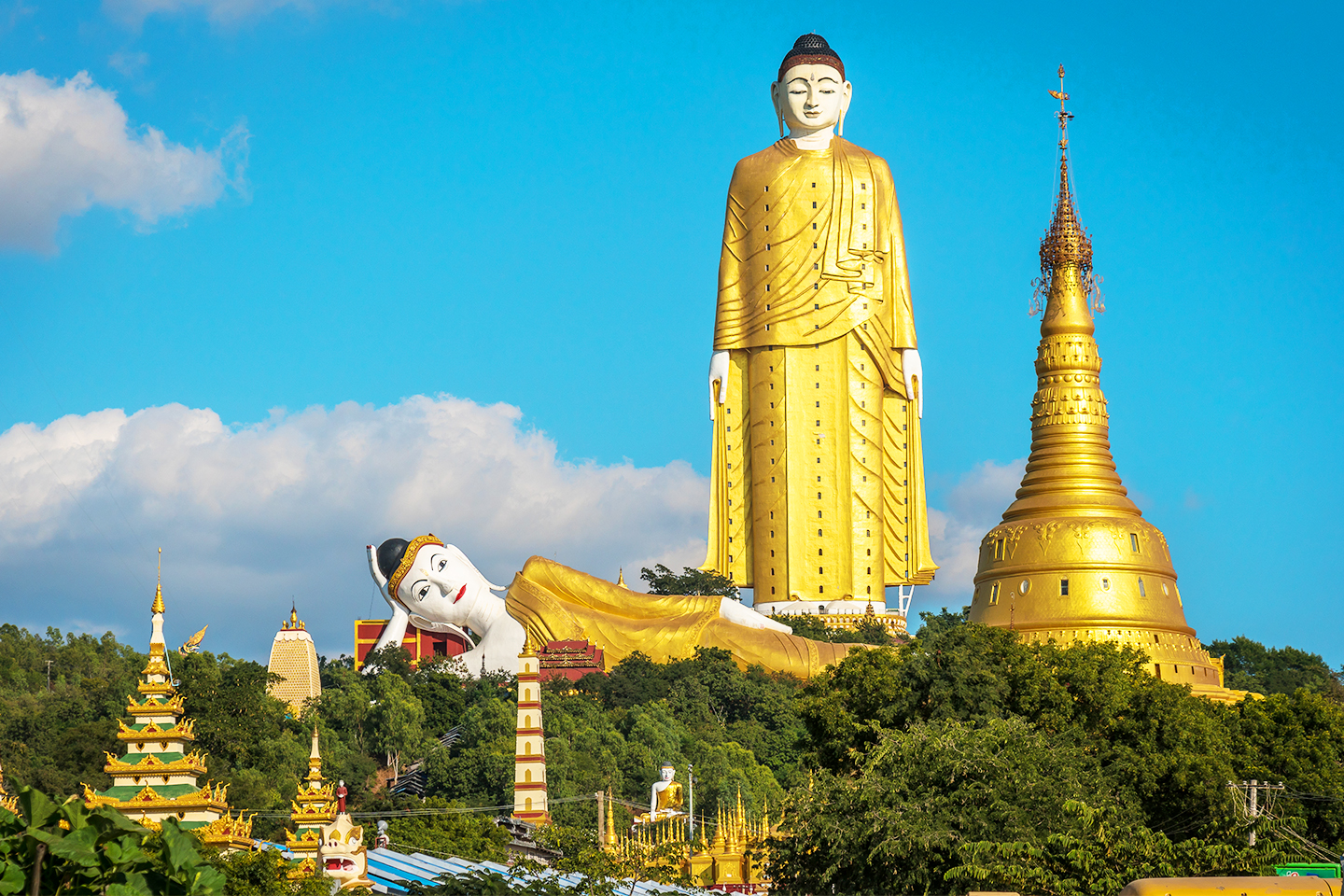 Anton_Ivanov / Shutterstock.com Laykyun Setkyar Standing Buddha was built by the venerable monk Bodhi Tahtaung Sayadaw and completed in 2008 February. It is the third tallest Buddha Image in the world at 116 m (380.58 feet). The Buddha image is located on Mt. Po Khaung. It is a hollow type so people can climb by the stairs inside of the statue and enjoy the panoramic view. The Reclining Buddha is on the way down from the hilltop of the standing Buddha.
Anton_Ivanov / Shutterstock.com Laykyun Setkyar Standing Buddha was built by the venerable monk Bodhi Tahtaung Sayadaw and completed in 2008 February. It is the third tallest Buddha Image in the world at 116 m (380.58 feet). The Buddha image is located on Mt. Po Khaung. It is a hollow type so people can climb by the stairs inside of the statue and enjoy the panoramic view. The Reclining Buddha is on the way down from the hilltop of the standing Buddha.
Bodhi Ta Htaung
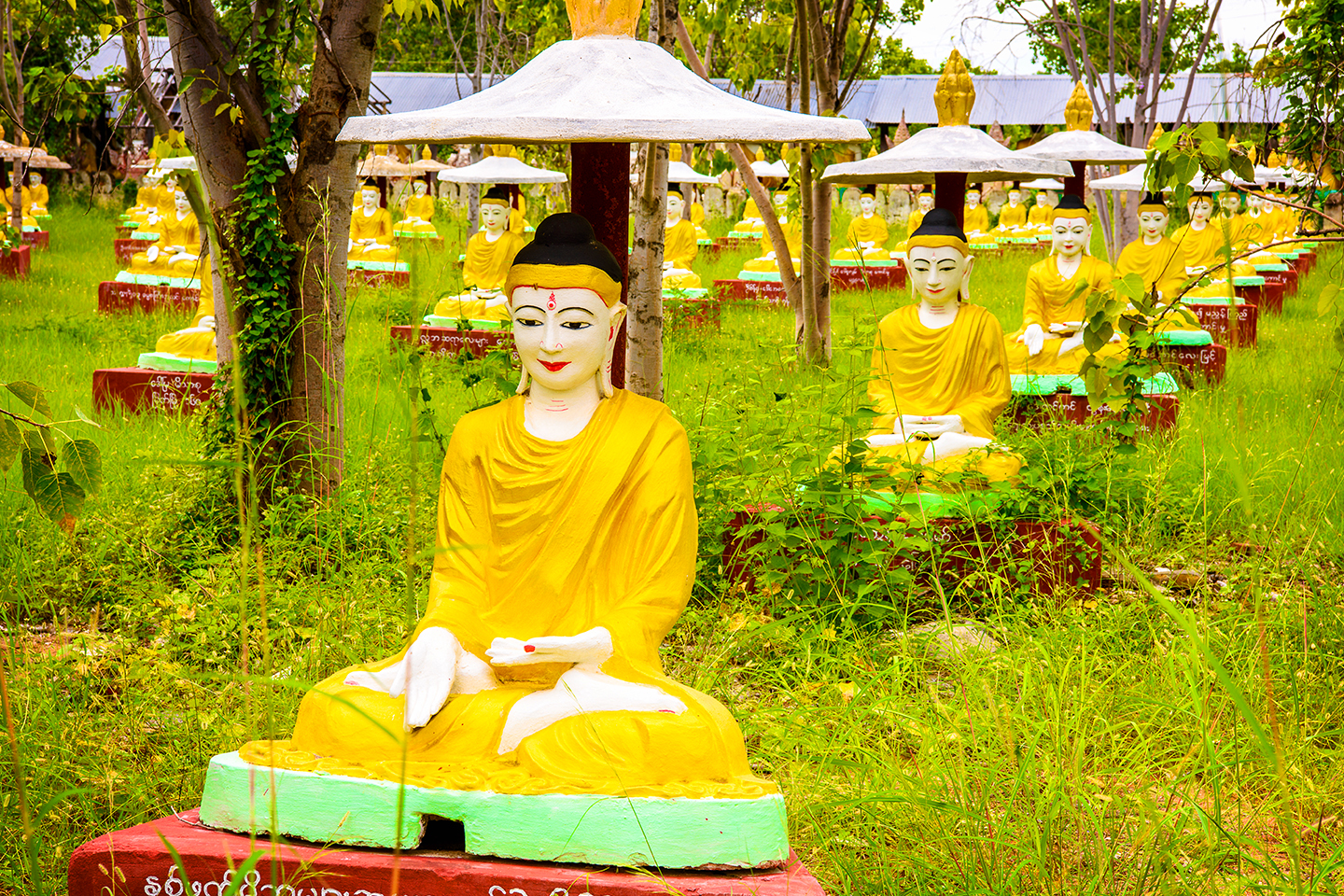 Anton_Ivanov / Shutterstock.com Bodhi Ta Htaung (Bodhi means “Bo tree”, Ta Htaung means “a thousand” in Burmese) was founded by Sayadaw U Narada (also known as Bodhi Ta Htaung Sayadaw) in 1960 by planting a thousand of Bodhi trees and building a thousand of Buddha images under each tree. Bodhi tree is kind of religious significance for the Buddhists since it is the tree Buddha achieved the enlightenment underneath. The area is started in 15 acres with a thousand of Bodhi trees but now it had been extended to 250 acres with more than 9,000 Bodhi trees.
Anton_Ivanov / Shutterstock.com Bodhi Ta Htaung (Bodhi means “Bo tree”, Ta Htaung means “a thousand” in Burmese) was founded by Sayadaw U Narada (also known as Bodhi Ta Htaung Sayadaw) in 1960 by planting a thousand of Bodhi trees and building a thousand of Buddha images under each tree. Bodhi tree is kind of religious significance for the Buddhists since it is the tree Buddha achieved the enlightenment underneath. The area is started in 15 acres with a thousand of Bodhi trees but now it had been extended to 250 acres with more than 9,000 Bodhi trees.
Alaungdaw Kathapa
Alaungdaw Kathapa cave is one of the famous pilgrimage sites in Monywa. It is located in the center of the Alaungdaw Kathapa National Park which established as a wildlife sanctuary in 1941 and opened as a National Park in 1984. It is the largest National Park in Myanmar. Each year, there are hundreds and thousands of visitors pay homage to this pilgrimage site during the dry season. There are 2 festivals celebrating each year: the first one celebrates on the full moon day of Tabodwe (11th month of the Myanmar lunar calendar, usually in February) and the second one celebrates on the full moon day of Tabaung (12th month of the Myanmar lunar calendar, usually in March). You can take the bus till the foothill and you can enjoy the elephant ride or trekking (will takes about 1 hour) in natural forests to see the image of Alaungdaw Kathapa and the cave. The road to the foothill is very bumpy & dusty. The roads are impassible in the rainy season so the National Park is accessible only from December to May. Alaungdaw Kathapa was an enlightened monk of Gautama Buddha. According to the legend, the monk passed away and his body couldn’t be burnt. It can only be burnt when the new Arimaytaya Buddha comes to this world. His body was sealed in the cave with the stone door covers the entrance. The stone door is covered with the gold leaves by the devotees. Before going down to the cave, you can see the Alaungdaw Kathapa image inside the shrine.
Pho Win Hill
Pho Win Hill (known as Pho Win Taung in Burmese) is located on the west bank of the Chindwin River and approximately 25 km (15.53 mile) west of Monywa. In this compound, there are over 940 richly decorated sandstone caves and have numerous carved Buddha statues & well maintained mural paintings in the vivid colors. You can see the stunning exterior decorations cave and the cave with the great collections of the ancient Buddha images. Some of the images have been covered in the gold leaves by the local pilgrims. All of this Buddha images and paintings have been dated between the 14th to 18th centuries. You can see the richest collection of Buddha images and the mural paintings among South East Asia region.
Shwe Ba Hill
Shwe Ba Hill (also known as Shwe Ba Taung in Burmese) is located just near to the Pho Win Hill. Shwe Ba Hill was created by U Shwe Ba who carved out the hill into the caves, temples, Buddha images, etc. In this compound, there contrastingly different set of 46 cave chambers can walk through from the passageways which cut about 25 feet vertically down into the limestone by the narrow stone stairs. The vertical sides have been carved out to create the rows of temples on both sides. The whole labyrinth of the temples, Buddha images, shrines, passageways has been hacked out of the solid rock by hand without using any high tech accessories. You can also see the mural paintings dated around 13th century in some of the caves inside walls. This place is so intriguing and every corner is incredibly stunning.
Weather Conditions
In Sagaing, the summer period is quite sweltering and also partly cloudy. The winter period is quite chill and mostly clear sky. Sagaing has dry weather year round but you can feel the freshness of the natural breeze through from the Ayeyarwady River when travel to Sagaing hills on summer season.
How to get to Sagaing
The cheapest way to get from Yangon to Sagaing is going by bus which will cost from $ 20 and will take about 11 hours. The quickest way to get from Yangon to Sagaing is going by flight which will cost from $ 110 and will take about 3 hours. The distance between Yangon and Sagaing is 564 km. There are many hotels available in Sagaing area and the prices starting from $ 21 per night.
 English
English 日本語
日本語 မြန်မာ
မြန်မာ 汉语
汉语 國語
國語 ภาษาไทย
ภาษาไทย
